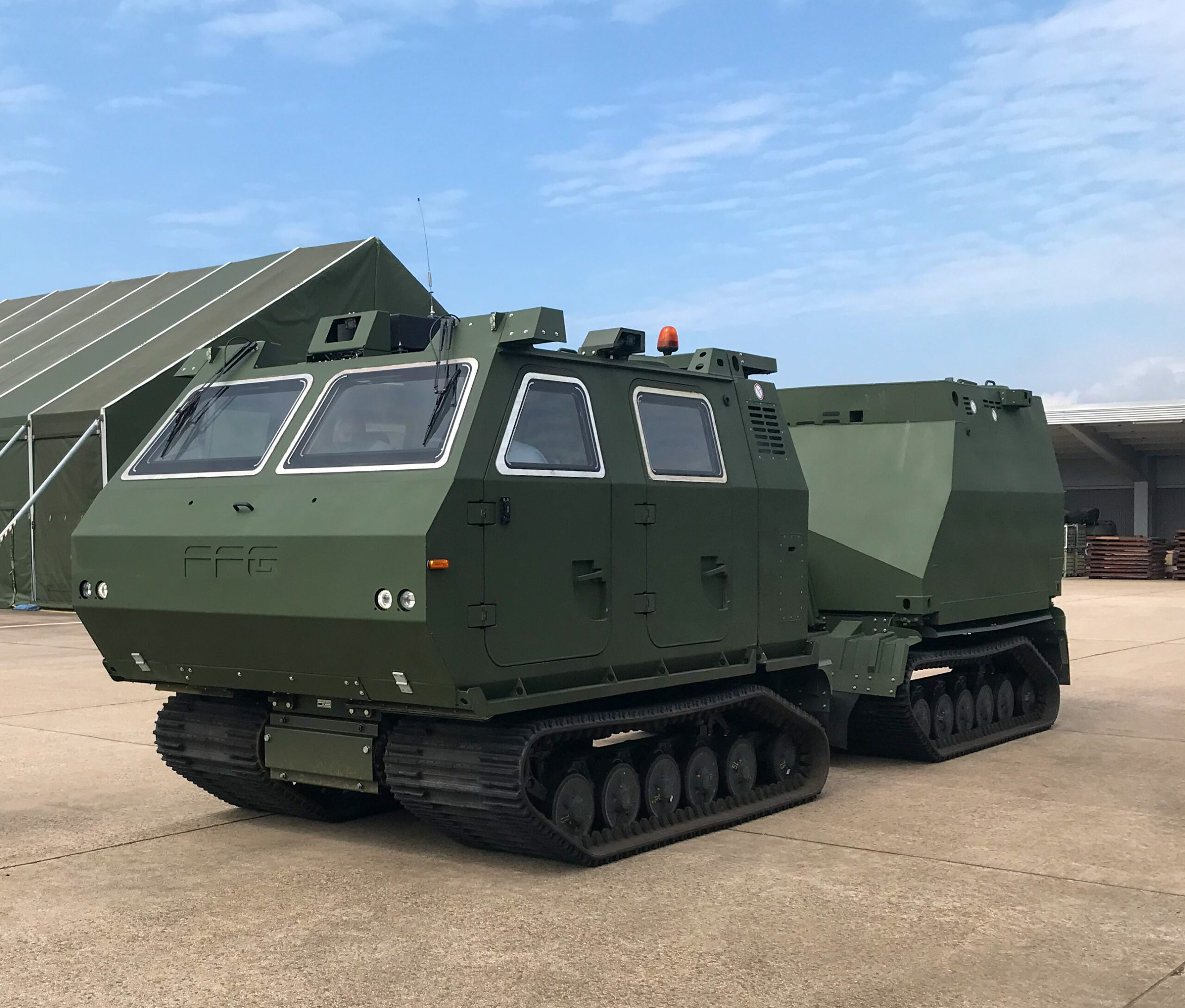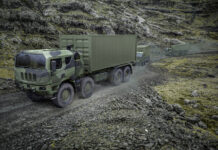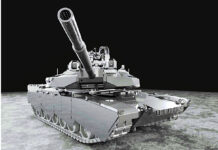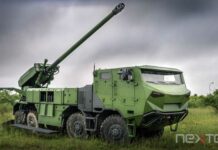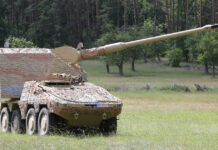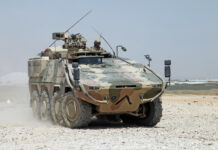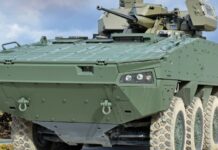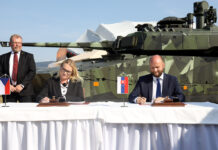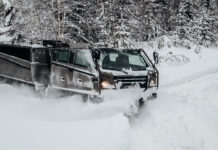Germany’s defence procurement agency the BAAINBw has taken delivery of a High Mobile Land-Platform (HiMoLaP) system demonstrator for component tests. FFG Flensburger Fahrzeugbau Gesellschaft mbH (FFG), who announced the news, built the demonstrator on behalf of the BAAINBw after the company developed solutions to weaknesses of known articulated vehicle systems and innovative ideas for the vehicle segment in a study – also commissioned by the BAAINBw. The work focused on articulated steering and propulsion.
Articulated vehicles – the best-known examples are the BV 206 and the BRONCO (and their variants) consist of two segments with propulsion on two tracks of each of the two segments. The steering is done by an articulated joint connecting the vehicle segments. The main advantage of this amphibious type of vehicle is its high off-road mobility with a smooth transition from solid ground to swampy ground to water.
FFG HiMoLaP Details
FFG’s system demonstrator is equipped with a bionic articulated joint making “active cornering” possible. Roll damping reduces the risk of the rear end rocking and thus significantly increases driving safety. For “Active Cornering”, the articulated joint slightly pulls the front and rear carriages together when cornering, thus reducing the effective chain contact area. This makes the steering more precise and reduces chain wear.
The standard diesel drive in the front carriage is supplemented by an electric drive in the rear carriage. The electric motor – used as a booster – can support the overcoming of critical situations with additional acceleration. It can also power the vehicle on its own and enable low-noise driving. The reduced acoustic signature of the vehicle makes missions such as reconnaissance safer.
Purpose of the Demonstrator
The system demonstrator will be used to test a variety of innovative components and systems. Important findings are to be derived from this, which can be groundbreaking for future vehicle developments.
The WTD41 will now test the HiMoLaP extensively and intensively in order to examine the suitability for everyday use of the proposed and installed solutions. A long-term test over several thousand kilometres in very different scenarios is planned, in which the individual components of the demonstrator are to prove their capabilities.
The Bundeswehr is looking for a successor to the articulated BV206s, which will reach the end of their service life from 2027. In a working group with the UK, the Netherlands and Sweden, the joint procurement of a Collaborative All-Terrain Vehicle (CATV) has been agreed. The plan is to have the vehicles produced by a prime contractor and customised by national subcontractors with he first vehicles delivered for integrated verification from 2022 and replacement with series vehicles in 2024.
Gerhard Heiming




